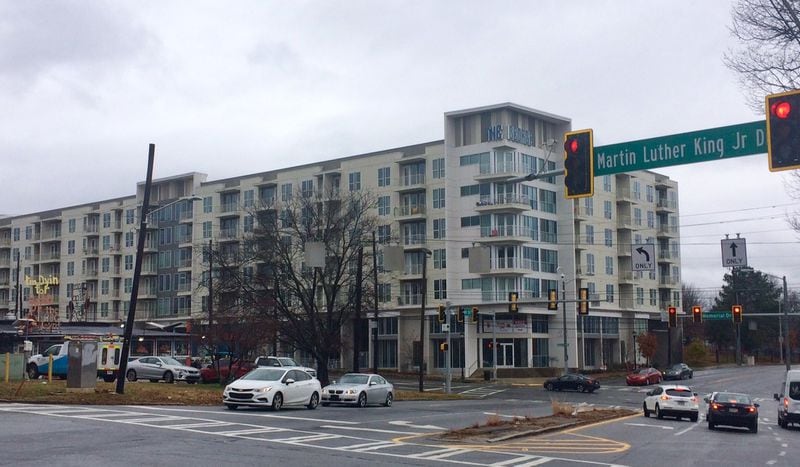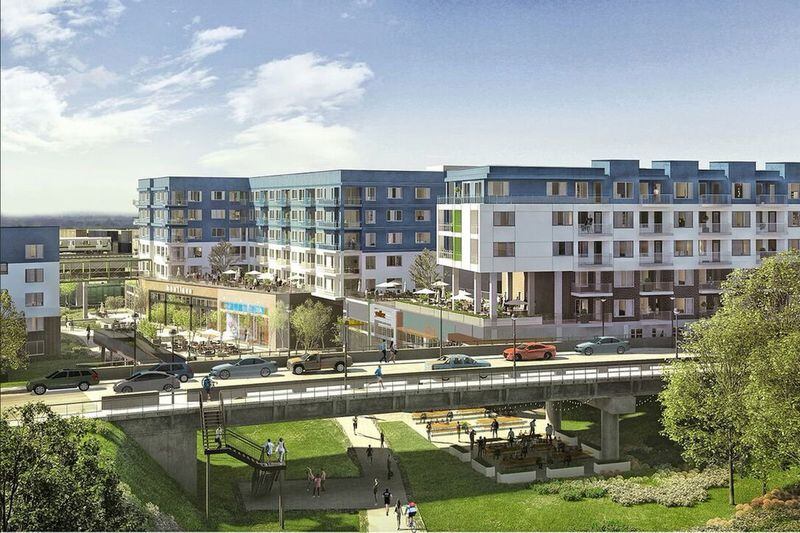Atlanta's Department of City Planning czar Tim Keane said he was misunderstood in a recent news story describing his efforts to jump-start engaging architecture and design in the city.
"I didn't say 'ugly' buildings; I said insulting buildings," said Keane, who seems personally offended by some of the uninspired structures developers are slapping up across the city.
Sometimes he’ll gaze upon a building or an architectural drawing and think: “How dare they? They have to have more respect for the city of Atlanta.”
In an earlier interview with the Saporta Report, Keane said: "People in Atlanta don't value design. It's a huge problem. I feel like people here think design is frivolous."
He didn’t back off when talking design with me. “Formulaic,” he said. As well as “corporate, cookie-cutter and almost cartoonish.”
In reality, there are many developers and architects who are trying. But overstatement is an effective rhetorical tool because it registers with those of us in the cheap seats, those of us who look at some structures being thrown up and wonder, “Couldn’t they try harder?”
I once likened the increasingly omnipresent "five-over-one" apartment buildings going up everywhere to Soviet bloc housing.
My former AJC colleague Catherine Fox, an award-winning architecture critic, pushed back on my hypothesis. At least Atlanta designers use cantilevers, decks and colorful siding, she offered.
Perhaps she had a point. How about Homogeneous Habitation for Hipsters?
Yes, architects festoon these structures with cheap brick facades, colored slabs of siding, painted stucco and micro-decks. Despite the efforts, those buildings still appear rushed, basal and predictable.
Keane calls the style the “Mr. Potato Head Architectural School.” You know, you can swap out the eyes, ears, noses and hats on the spud, but no matter how you dress him up, he’s still Mr. Potato Head.
And from the looks of things — and the materials used — many of these buildings will be tired and run-down in 20 years.
Keane came to Atlanta from Charleston, S.C., a historic city with tough zoning and design ordinances and a community that values such things.
“The best design enriches people’s lives,” he said. “Dignity is to design as justice is to law as health is to medicine.”
A tad lofty, but I get it. My dad, an insurance guy, once worked in a classic bank building in downtown Chicago. He was just a mid-level grunt, but as a young kid visiting the impressive atmosphere, I thought I was somebody.
Keane’s office in recent months has challenged developers to come back and redo their designs. One was a hotel at the corner of Peachtree Street and Ponce de Leon Avenue, across from the Fox Theatre and perhaps the city’s premier intersection.
The new design called for a grander, more artful facade at the corner and recessed windows.
“We just don’t say, ‘We don’t like this,’ ” Keane said. “We try to help them.”
It’s about getting back to the basics, about proportions, scale, windows and how it fits in with neighboring structures.
Keane produced “before” and “after” drawings of a building on Marietta Street, and I must admit that I (a very amateur building design critic) preferred the initial design. It was like the city made the building more boring.
When it gets down to it, who determines what constitutes good aesthetics? And what is good design?
It’s like the Supreme Court justice said about pornography, “I know it when I see it.”
Architect David Hamilton, who sits on the Beltline design review committee, likes that Keane is bringing up this debate. “But,” he added, “when you try to legislate aesthetics and style you get into real problems.”
Hamilton, too, is from Charleston and said he “wanted to get out of there because for new architects, there was nothing new and interesting.”
“I’d rather live in an environment where people take chances,” he said.
Architect Eric Kronberg, who specializes in redesigning old buildings, said city building codes hamstring developers from worrying much about design.
He said being forced to pay for stormwater abatement, new sidewalks and parking spaces eats up the budgets for projects. This affects design and, more importantly, the quality of materials used.
“Look at the skin of buildings; how long will it last?” Kronberg said. “We’re building 30-year buildings. With all the mandates, you can’t afford a 50-year building.”
Matt Bronfman, head of Jamestown Properties, which transformed the hulking former Sears building into the popular Ponce City Market, once complained that it’s too easy to build “schlock” in Atlanta.
“Often, I drive by (a building) and think, ‘They could have done better,’ ” he said. “I think it’s just cheap.”
He spoke of two driving and competing forces in construction. There’s the model that says: Get in quick, spend as little as possible and get out. Or there’s this: Spend more money, build with quality and succeed in the long term.
“We did quality at Ponce and now the community sees you can be rewarded for it,” Bronfman said.
Mark Toro, head of North American Properties, which is redoing Colony Square in Midtown, said many buildings embrace form over function. He pointed out the Bank of America Plaza skyscraper with its lighted, finial top as the type of structure that is a “monument to developers and architects,” with cavernous lobbies and facades that are uninviting from the street.
“I’m not a big fan of architecture as art,” Toro said. “I’m more a fan of architecture as a means to create community,” he said.
In other words, he’s concerned about how pedestrians interact with the building, and how it is embraced by the community every day. His firm’s project on the Beltline, called Edge, is being talked up in building circles because it is somewhat unique in that it will have several business fronts facing the walking trail.
I’m sure it will be a hit.
But before speaking with Toro — or knowing he had anything to do with it — I drove by the colossal project and thought the buildings looked like many of the others I had criticized for sameness.
Everyone’s an expert. Or at least has an opinion.
About the Author












